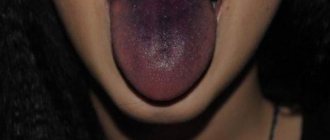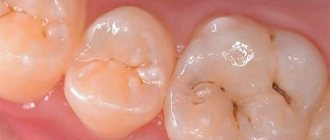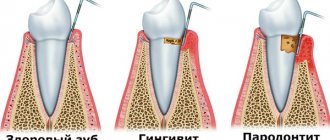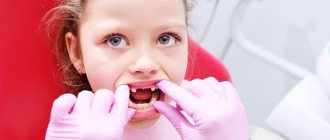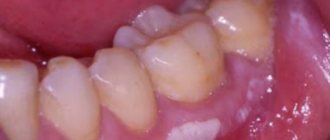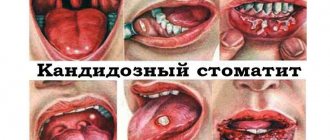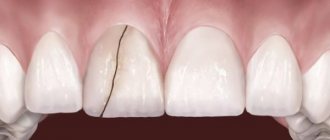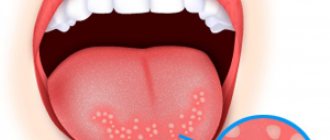July 8, 2020 Last revised: September 14, 2020 Whitening
Dental plaque is an accumulation of bacteria, white blood cells, dead mucosal cells, saliva molecules, and food debris. For the most part, it is what creates bad breath. It also causes the formation of tartar, which, in turn, injures the gums and negatively affects the enamel.
Bacteria, which form the basis of dental plaque, often provoke inflammation and caries. Risk factors: smoking, addiction to coffee, tea, consumption of highly colored foods.
The most common reasons for education:
- ineffective, irregular oral hygiene;
- predominance of soft food;
- malocclusion;
- metabolic disorders that negatively affect the acidity or composition of saliva;
- negative effects of certain medications;
- periodontitis (inflammatory processes in the tissues that surround the roots).
How does plaque form?
It can be soft and hard. Soft plaque is natural and is formed all the time in all people. Occurs when eating and is associated with the characteristics of the microflora of the oral cavity. The bacteria that are present in the mucous membranes do not disappear even after thoroughly cleaning the teeth and tongue and rinsing.
Each tooth has a structureless semi-permeable film (pellicle). It is only 1 micron and contains immunoglobulins, acidic proteins, and enzymes. Exchange processes between saliva and enamel take place through the pellicle.
Microbes of the oral cavity constantly secrete highly adhesive heteropolysaccharides, which allow them to attach to the pellicle. When they accumulate, a soft porous shell is created - plaque. Without regular teeth cleaning, plaque is deposited by bacteria, white blood cells, molecules, dead cells, and food elements. Its thickness will constantly increase, over time it will harden and turn into tartar.
How to get rid of plaque - 5 effective methods
- The simplest procedure for removing soft plaque is the Air Flow sandblasting system. The principle of operation of the system is based on “washing it off” from the teeth with a mixture of water and soda. Of course, this process weakens the upper layers of enamel, so after removing the plaque, it is necessary to treat the teeth with a special protective paste. It is difficult to deal with hard deposits and tartar using this procedure.
- Gentle laser cleaning will help clean your teeth without damaging the enamel layer. This procedure is painless and does not have a negative effect on the enamel. Moreover, after it the gums do not bleed, which often happens when sandblasting teeth. True, the cost of such cleansing will significantly hit your pocket, and not every clinic has laser equipment.
- Dark plaque often occurs in patients with weak enamel. How to get rid of it without making it worse? Here an ultrasound device will come to the aid of the doctor, thanks to which it is possible to remove not only hard deposits, but also massive formations of tartar. In this case, the process will be painless and non-traumatic.
- If you are unable to see a doctor, there are also home ways to remove black plaque on your teeth. How to remove it, for example, with fluoride-containing pastes? It is enough to treat the enamel daily with an electric toothbrush (the vibration effect enhances the effect of the paste) at an angle of 45 degrees to the tooth surface.
- There are also more “folk” ways to whiten blackened teeth. Many people use crushed activated carbon or a mixture of soda and a three percent solution of hydrogen peroxide, rubbing this mixture with a cotton pad directly into the enamel. A significant disadvantage of this method is the severe thinning and destruction of the enamel layer. So if you have weak enamel, this method is quite dangerous.
Stages of plaque formation
- Stage one lasts 4 hours after brushing the teeth. During this period, the remaining bacteria multiply and spread throughout the oral cavity. After 4 hours, the number of microorganisms in the mouth is approximately 1 million.
- Stage two lasts from 4 to 7 hours. During this period, the number of bacteria actively increases and reaches 10 million. Microorganisms, mainly streptococci and lactobacilli, attach to the enamel, forming a thin, soft coating. The acids that these bacteria produce negatively affect the enamel. This is how tooth decay begins.
- Stage three begins at 7 o'clock. Plaque becomes noticeable and its final structure is formed: anaerobic bacteria that do not require oxygen.
It is saliva, or rather the microbes in it, that helps plaque thicken and harden. Soft turns into hard through the process of mineralization. In most people, tartar forms near the mouth of the salivary ducts. Such stones begin to put pressure on the gingival grooves, irritating them, which interferes with the normal metabolism between saliva and tissues. This leads to damage to the enamel, inflammation of the gums develops, and pathology penetrates into the deeper layers.
Preventing plaque requires professional hygiene, which only a dentist can provide. If you try to remove tartar yourself, you can injure soft tissues and enamel.
Reasons for formation
There are several main reasons why plaque can form on teeth:
- Bad habits. As a result of smoking, a layer of nicotine forms on the surface of a person’s teeth and in the oral cavity. Plaque develops on it very easily.
- Improper oral hygiene. Untimely brushing of teeth or its complete absence, incorrectly selected brush and toothpaste are also some of the risk factors.
- Low quality water containing iron, harmful salts, or not filtered at all.
- Disturbed hormonal levels.
- Chronic diseases of the oral cavity.
- Malocclusion, during which only one side of the jaw is involved in its main processes. The second at this time is at risk of the appearance of formations.
Prevention
Only regular, comprehensive cleaning of the oral cavity allows for the prevention of dental plaque. Dentists recommend combining several products to ensure comprehensive prevention.
What to do:
- drink less coffee;
- eat more foods with fiber;
- consult your dentist regularly;
- choose quality toothpastes;
- use dental floss and mouthwash.
Means for prevention
- Toothbrush. This is the most affordable way to mechanically clean the surface of teeth from plaque and prevent the formation of stones. You need to brush your teeth at least twice a day. First, clean the outer surface by turning the brush from the gums to the cutting edge, polishing the teeth in a circular motion. The inner edge and chewing surface of the lateral teeth are cleaned next. End of cleaning: tongue treatment, mouth rinse. Be sure to wash the brush.
- Dental floss (floss). The floss is pulled with your index fingers and carefully inserted into the space between the teeth. Progressive movements allow you to clear the area of plaque. It is recommended to floss at least once a day before bed, but it is better to do it after meals. Floss is an excellent tartar preventative.
- Toothpaste. This remedy must be chosen carefully; it is recommended to seek the help of a dentist. You need to choose a paste: whitening, strengthening, against inflammation, bleeding gums, tartar. Doctors often recommend combining different pastes. Only a doctor can prescribe medicinal pastes.
- Rinse aid. Many people greatly underestimate the importance of mouthwash. You need to rinse your mouth daily. Medicinal products of this group can influence the process of reproduction of pathogenic bacteria.
In the space between the teeth, alba accumulates to a large extent - white deposits that consist of bacteria and salivary proteins. In this case, caries and gum inflammation can be avoided only with dental floss.
This simple method allows you to clean even the space between tightly fitting teeth from deposits. Only floss can clean the area below the gum line.
An alternative to flossing is a water syringe, which is designed for people with arthritis and tremors.
What products are effective for removing plaque from teeth at home?
Removing dental plaque at home is a common practice. True, folk methods will be effective only if the film on the teeth has not yet had time to petrify.
Abrasive toothpastes
To clean enamel from plaque at home, first of all you need to try special pastes. This is the safest method of whitening, since such products do not contain hydrogen peroxide or other components that affect the color and structure of the enamel. The active ingredients in the pastes gently cleanse the teeth and restore their natural shade.
Pastes containing silicon dioxide or titanium are considered the most . These substances are the safest abrasives for enamel. In addition to them, such pastes usually contain various enzymes, which by themselves cannot remove plaque from teeth , but can make it less resistant to cleaning. These substances include pyrophosphates and papain.
The most effective abrasive toothpastes:
- Lacalut White.
- Lacalut White & Repair.
- Rembrandt "Antitobacco and coffee."
The first teeth cleaning product can be used once every 2-3 days, since it contains extremely coarse abrasive particles that can cope with even the initial stage of tartar, but harm the enamel. All other products are suitable for daily plaque removal at home, however, after several weeks of using them, it is better to take a short break. Even in a dental office, deposits can be removed with abrasives no more than twice a year.
Activated carbon
Of all the folk remedies for removing plaque, the most effective is activated carbon. It is used in the form of a finely ground powder, which is an excellent abrasive, gently removes deposits and polishes enamel.
A number of other products have the same effect, but only activated carbon has absorbent properties: its particles attract contaminants. After brushing your teeth with charcoal, rinse your mouth thoroughly with water.
The absorbent helps remove yellow and brown plaque not only from the visible surface of the teeth, but also from the most inaccessible areas. If most of the deposits accumulate in the interdental space and near the gums, it is worth trying to remove them using activated carbon.
The method of removing plaque using this product is very simple:
- Grind one charcoal tablet.
- Wet a regular toothbrush.
- Apply powder to the brush.
- Brush your teeth as usual for 2-3 minutes.
- Rinse your mouth.
You can remove plaque at home using charcoal only 3 times a week. Otherwise, the enamel will become more sensitive.
Tooth powders and soda
You can remove black plaque from teeth at home using baking soda or tooth powders, the main component of which is the same soda. Sodium bicarbonate provides high-quality abrasive cleaning of teeth and is absolutely harmless to the human body, but it is not effective in removing dark dental plaque.
Professional tooth powders also contain additional components that enhance the effect of soda. Most often they contain essential oils, and a little less often they contain enzymes that destroy the structure of deposits. In addition, dental powders may contain components to freshen breath and fight bacteria.
The most effective tooth powders are:
- whitening powder for smokers from Fitokosmetik LLC;
- Thai powder Herbal Clove Toothpaste.
The latter remedy can only be found in Moscow or other large cities, since its sale in the Russian Federation is not officially permitted.
The principle of using powder and soda is the same as activated carbon. Such products can be harmful to enamel, so you should not use them more than 2-3 times a week.
Essential oils
You can clean your teeth from yellow plaque at home using essential oils. This folk method of lightening enamel is the safest, since essential oils do not contain abrasive particles.
The most commonly used essential oils are tea tree and lemon. Both products have a persistent antiseptic effect - they kill bacteria, which are the cause of the formation of dark plaque. Lemon oil can also dissolve the plaque itself to a small extent.
It is advisable to purchase essential oils from trusted brands. It is better not to look for them in pharmacies; they usually sell diluted products that are not suitable for brushing teeth with plaque.
There are two ways to use oils:
- For the first one, you need to take a glass of plain water and add 1-2 drops of both types of oils or 3-4 drops of one of them. Rinse your mouth with the resulting solution after each brushing of your teeth. The product will not only allow you to effectively clean your teeth from plaque at home, but will also improve the condition of your gums and remove putrid odor from your mouth.
- In the second method, a few drops of oil are applied directly to the brush before brushing your teeth without toothpaste. Before the procedure, you can brush your teeth with ordinary toothpaste, then the whitening effect will be more noticeable.
All of the above cleaning methods are really effective, but you shouldn’t resort to them too often. If you overuse traditional teeth whitening methods, you can damage the enamel, which will lead to even faster tartar formation, the development of caries and increased gum sensitivity.
Types of dental plaque in adults and children
Dark
Dark plaque is colored this way due to nicotine tar pigments, which are colored foods. The reason for the formation of such plaque is a violation of the metabolism of phosphorus, calcium, and vitamin D. Saliva protects the oral cavity, it cleans and disinfects. Lack of saliva allows bacteria to multiply and form plaque. In children, dark plaque is not uncommon. It may indicate dysbacteriosis or hypoplasia of tooth enamel.
You cannot deal with dark plaque on your own; you need the help of a dentist. Active cleaning methods only aggravate the process, in this case special therapy is required. Most often, doctors recommend installing veneers to hide the defect.
Black
In children, it may indicate gastrointestinal diseases, dysbacteriosis, helminthic infestation or the presence of fungi in the oral microflora. In an adult, black plaque often forms due to the abuse of cigarettes, coffee and alcoholic beverages.
Causes of black plaque:
- antibiotics;
- severe disease of the liver, spleen, bile ducts, as well as abscess, viral infections;
- violation of the acid-base balance in the mouth;
- working conditions;
- drugs;
- copper products in the mouth;
- intoxication;
- allergy;
- metabolic disorder;
- parasites;
- chemotherapy;
- ignoring dental services.
Black plaque can be eliminated by treating its cause. It is impossible to remove black plaque at home; it is not affected by whitening pastes.
Yellow
Teeth always have natural pigment, so yellow can be a natural color. In this case, we can say that a person has an oversaturation of minerals: then the enamel becomes yellow and hard, and whitening can injure the teeth. Yellow plaque is often hereditary. It is soft and most often forms at the roots of the teeth.
Causes:
- bad habits (especially hookah smoking);
- sugar abuse;
- diets;
- injuries;
- age;
- poor hygiene;
- braces.
White
This type of phenomenon is the most common. Soft white plaque affects all people and accumulates during the day or at night. The formation includes particles of food, mucous, and bacteria. It does not harm your teeth if you clean it regularly. It can be easily removed with a toothbrush.
With irregular or poor hygiene, the white plaque hardens and tartar can form. Pathogenic microorganisms provoke tooth decay and bad breath.
Causes of white plaque:
- lack of vitamins;
- unbalanced diet;
- predominance of soft foods.
It is quite possible to deal with white plaque at home, but in some cases you still need to consult a dentist.
Brown
A very common phenomenon among smokers and coffee lovers. The components of these products form a film that is very difficult to remove with a toothbrush. Brown plaque is also formed during the production of brown salt due to the abnormal secretion of iron into saliva.
Causes:
- rinse with manganese;
- exposure to chlorinated water;
- use of iodine;
- vapors of mercury, lead, nickel, iron or manganese;
- acid necrosis;
- Rh conflict during pregnancy.
Brown plaque cannot be removed at home.
Green, orange and red
Greenish and orange plaque is caused by fungi, often in children and adolescents. The green color comes from chlorophylls, and the orange color comes from chromogenic bacteria. Only a dentist can cure the phenomenon.
Reddish deposits may indicate porphyria, a hereditary pathology in which the pigmentation of soft tissues is disrupted. Sometimes the red color is the result of a tooth injury with bleeding and rupture of the pulp sac.
Coffee stain
If you overuse this invigorating drink, a yellow, brown or black film may form on your teeth. If you combine coffee with smoking, a dark film on the enamel cannot be avoided. Such deposits can only be removed in a dental office.
Plaque in smokers
For smokers it is black or dark brown and cannot be removed with a regular brush.
When smoking, nicotine resin, ammonia and phenol components, and tar are deposited on the teeth. Smoke promotes the formation of a film on the teeth, to which germs stick. Smoking stains can only be removed by professional cleaning.
Recommendations from Dr. Zubastik
A snow-white smile is attractive and fashionable. If your teeth have acquired a yellowish tint, try one of the suggested remedies. As a doctor, I still recommend pharmacy methods, not home recipes. And don’t forget about the main condition: before whitening, make sure that the oral cavity is sanitized.
And now, as is tradition, video tips on how to overcome yellow teeth. Let's see?
Tags: activated carbon, Vodka, Gel, Yellow teeth, Yellow plaque, Mouth guards, strawberries, lemon, folk remedies, Whitening strips, hydrogen peroxide, soda, Table vinegar, Sage
About the author: Dr. Zubastik
Typically, a toothache begins to subside on the way to the clinic and finally goes away after 10 minutes of sitting in line to see the dentist.
- Related Posts
- Tartar in humans: harm, causes and removal at home
- Nausea again... How to overcome the gag reflex when brushing your teeth?
- What to do if gray plaque forms on your teeth?
« Previous entry
Plaque on a child's teeth
Most often in children, white plaque is found. Regular brushing can help prevent plaque from hardening. Brown and yellow plaque may indicate tooth decay from sucking a pacifier or drinking sugary drinks before bed.
Yellow and green deposits are diagnosed as a fungal infection. Consultation with a dentist is required. Dark types of plaque often appear with dysbacteriosis. In this case, contact a pediatrician.
Prevention in children:
- air humidification in the children's bedroom;
- proper oral hygiene;
- sufficient water intake;
- eating hard vegetables and fruits;
- ensuring normal breathing;
- eliminating milk and juice at night;
- timely disposal of bottles and nipples.
Plaque on baby teeth can cause tooth decay. It is best to treat diseased teeth rather than remove them. Early removal increases the risk of malocclusion.
Preventive actions
Measures to prevent the formation of dark plaque look like this:
- Brush your teeth regularly and thoroughly on both sides after each meal. The direction of the brush is from top to bottom. What to clean in between? It is recommended to use floss soaked in an antibacterial solution;
- periodically use rinses that help destroy germs;
- reduce the number of cigarettes smoked;
- diversify your diet and include foods rich in vitamins.
It is advisable to undergo a preventive examination in a dental office twice/12 months.
How to prevent plaque formation
Plaque on teeth is often a reason to give up bad habits. Quitting smoking and drinking alcohol helps a lot in the fight against deposits on enamel. It is very important to review your diet, add fiber, reduce the amount of coffee and soda. Solid vegetables and fruits allow you to clean your teeth naturally.
It is extremely important to brush your teeth at least twice a day. Fluoride-containing pastes will be the most useful. To fully protect your teeth from plaque, you need to pay attention to the interdental space.
Causes
The reasons for the appearance of black plaque on teeth can be very different:
- The most common option is plaque from frequent smoking and drinking coffee. Dyes very quickly penetrate the plaque accumulated at the base of the tooth, and over time this sticky mass darkens, hardens and literally grows to the enamel, forming tartar. Nicotine resins, as well as tea and coffee pigments, cause black plaque to form on teeth quickly, but is difficult to remove.
- Often, the formation of black plaque is a complication of serious illnesses, as well as a consequence of long-term use of antibiotics. For example, problems with the spleen, weak liver, various abscesses and complicated viral infections often cause dark plaque on the teeth from the inside.
- Often, blackening of the teeth near the gums occurs among workers of metallurgical enterprises, as well as factories with metalworking shops, shops for assembling finished metal products, etc. The fact is that at such enterprises, condensate containing microparticles of heavy metals, when inhaled, constantly settles on the internal organs, sometimes causing poisoning, not to mention simply staining the plaque.
- The reason for the formation of black plaque in children most often lies in elementary dysbiosis, since in young children the formation of normal intestinal microflora ends only by the age of three. So don’t give in to panic and start actively cleaning such plaque from your children’s teeth. Over time, it will most likely disappear on its own. Well, or, at least, it will go away on its own along with the baby teeth.
- The issue of apple consumption remains controversial. Eating one, maximum two apples a day is good not only for enamel, but also for the whole body. However, during the off-season, store-bought fruits that do not spoil for several months are clearly treated with chemicals that are harmful to health. And it’s unlikely that anyone will eat sour apples in large quantities. Consequently, those who like to go on apple diets eat a huge amount of formaldehyde and other chemical preservatives, as well as sugar, albeit in the form of fructose, every day. So such connoisseurs of a “healthy” lifestyle may also not be surprised at what black plaque means on their teeth.
- Well, the worst reason for the appearance of dark plaque is, of course, drug addiction. Although, in this case, it makes sense to talk not so much about plaque, but about the methodical destruction of all internal organs, including teeth. So there is no longer any talk about restoring a healthy smile.
